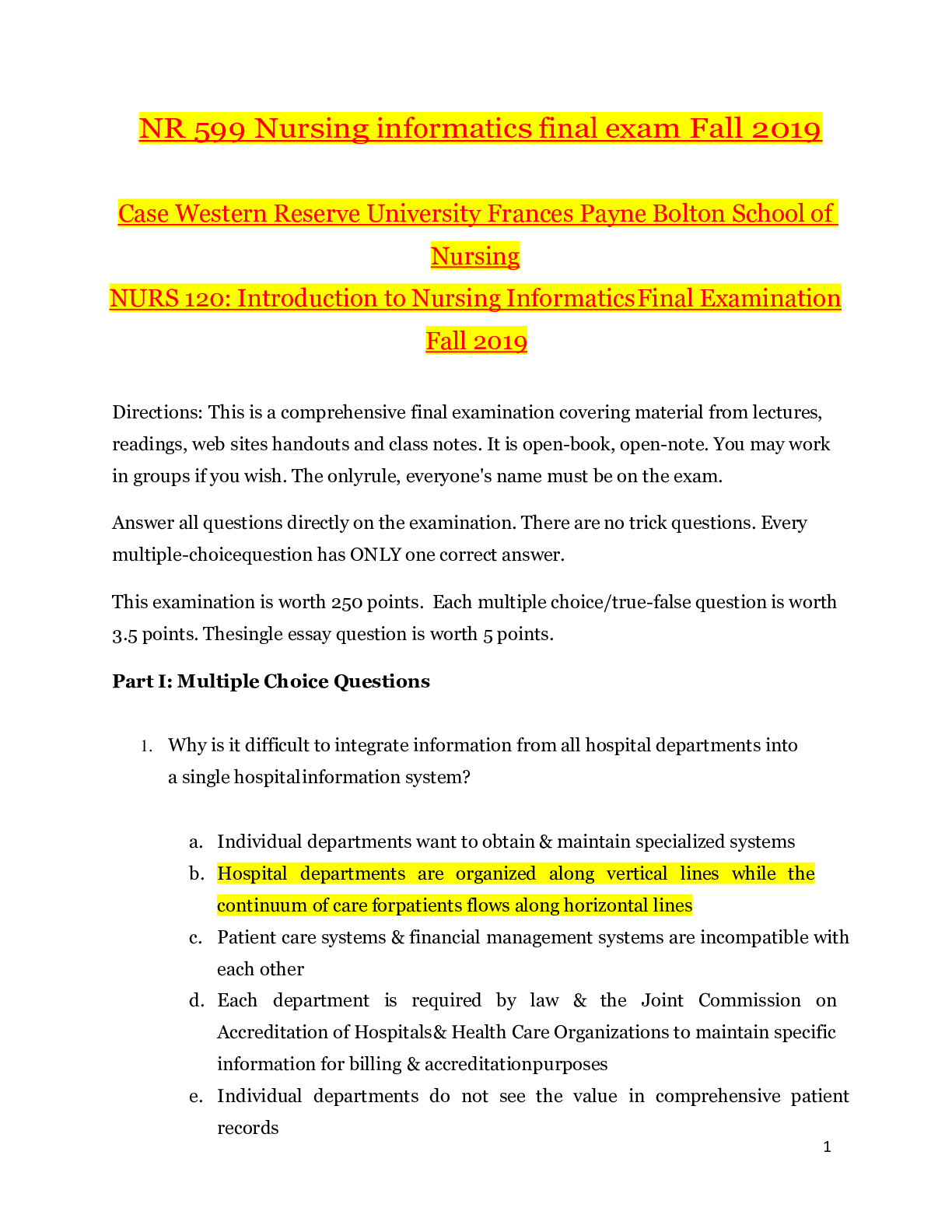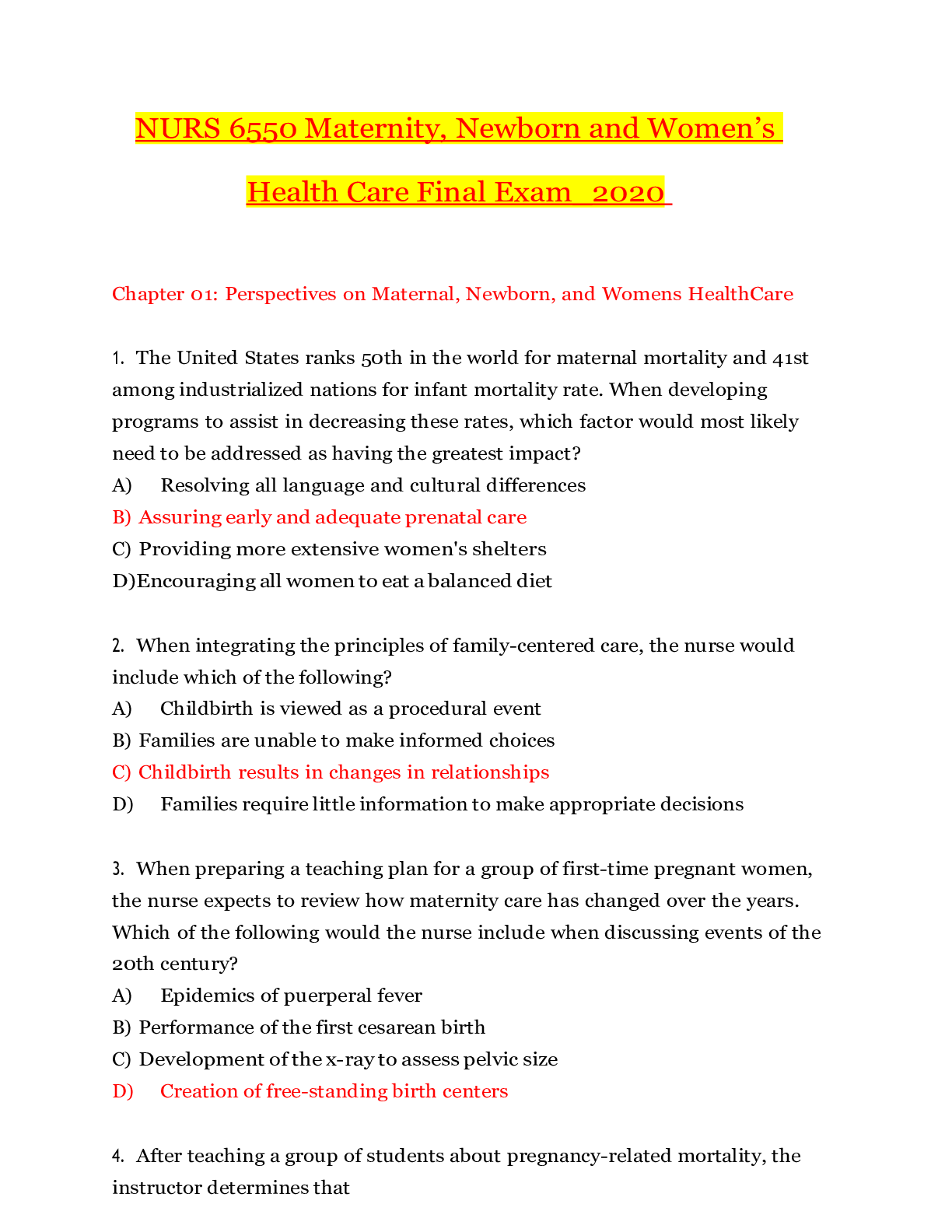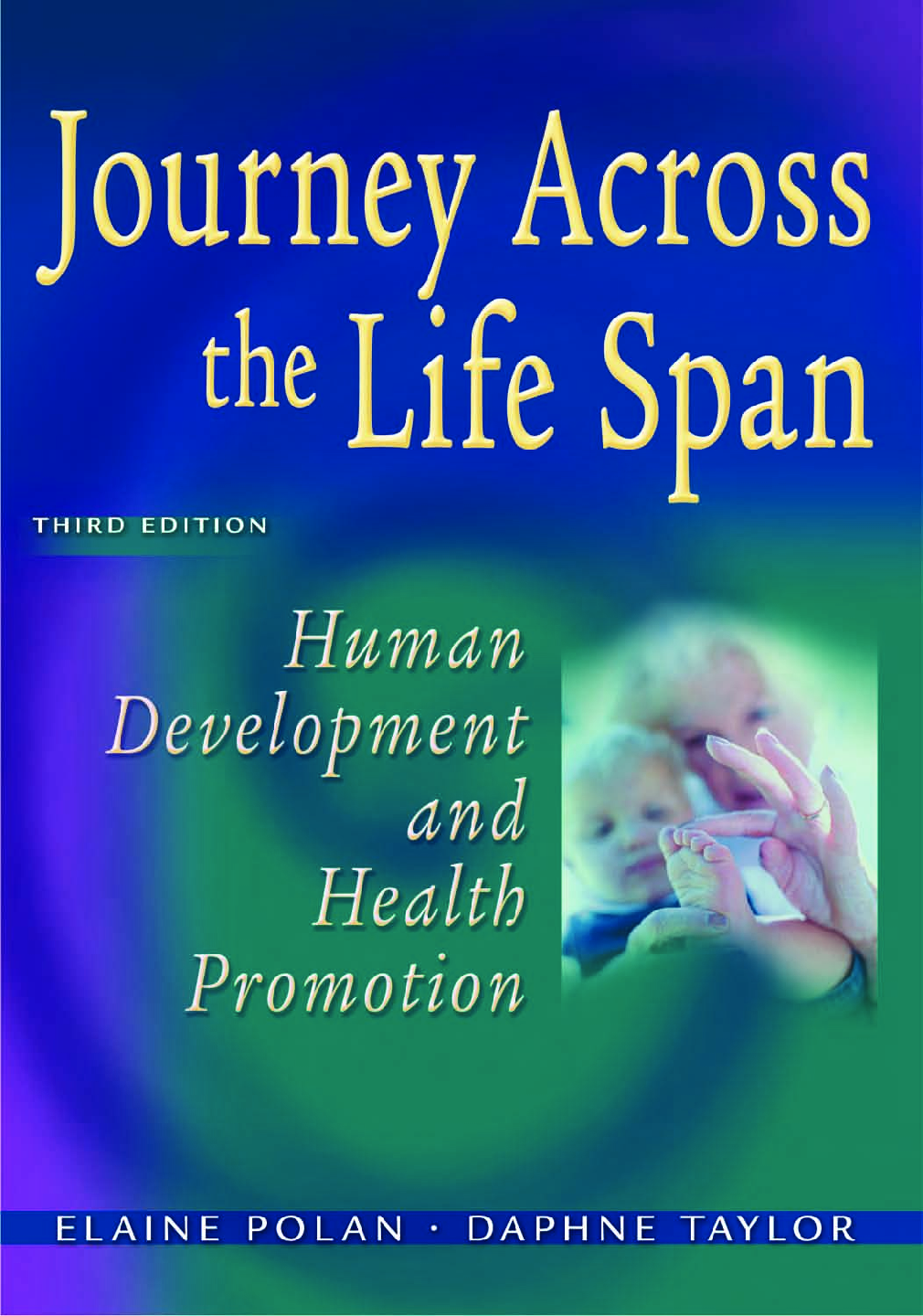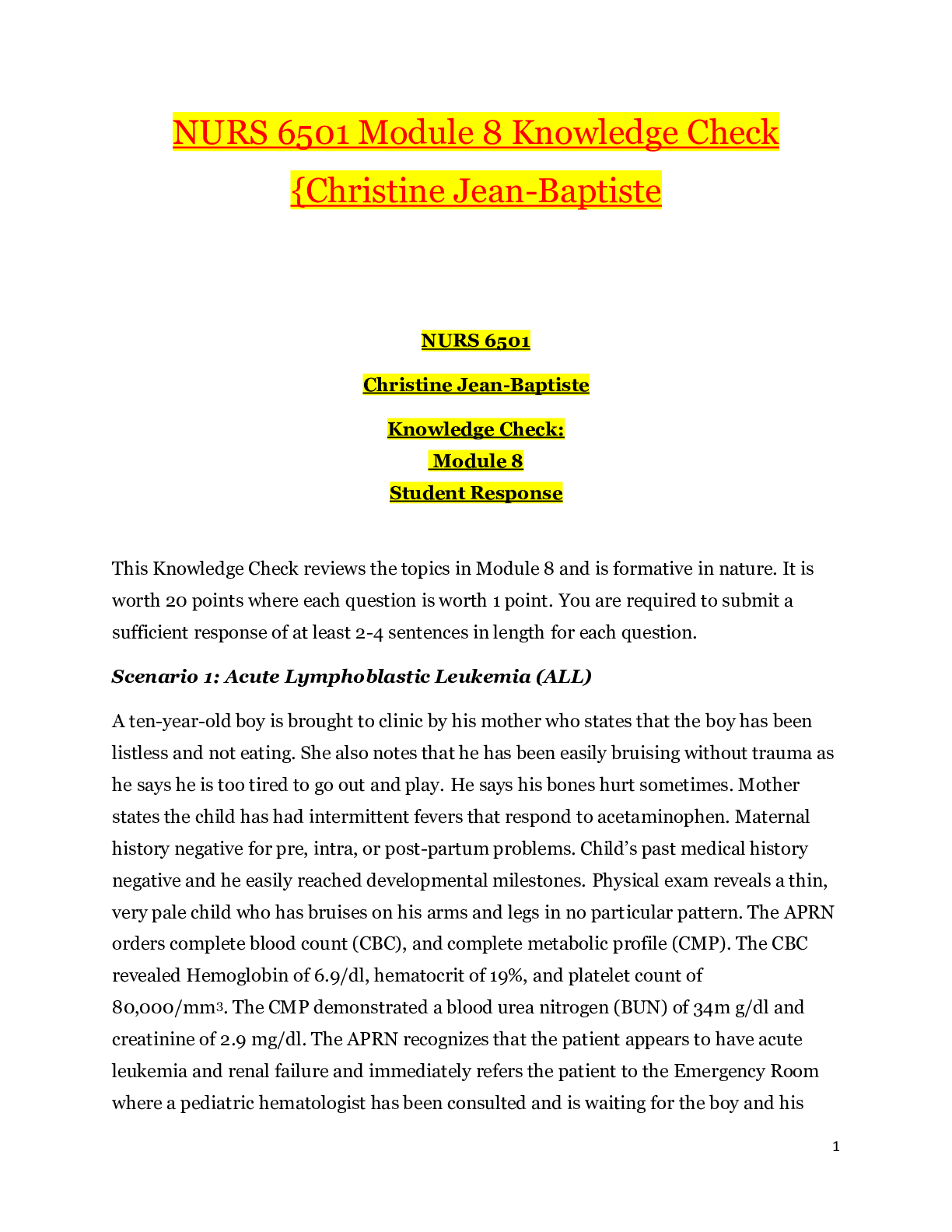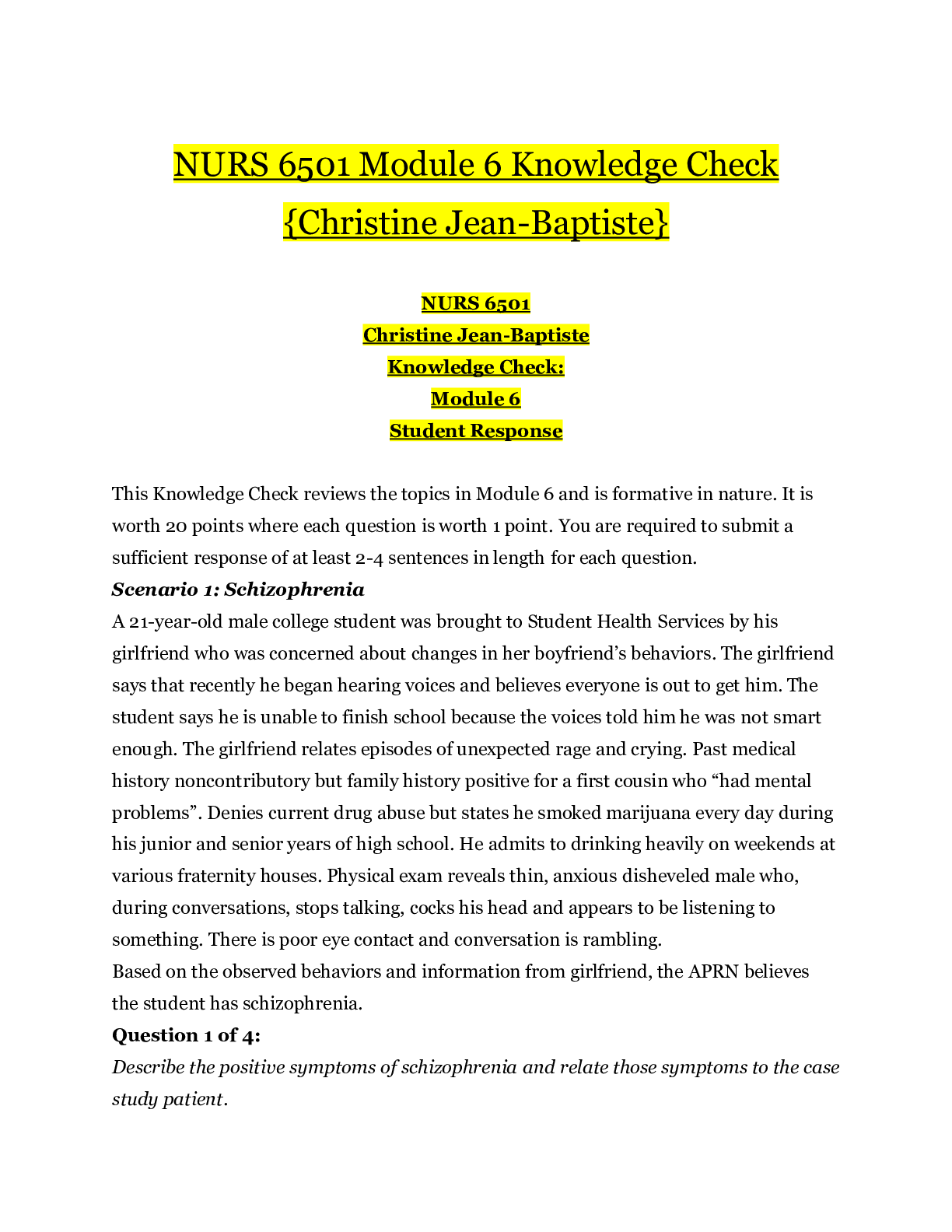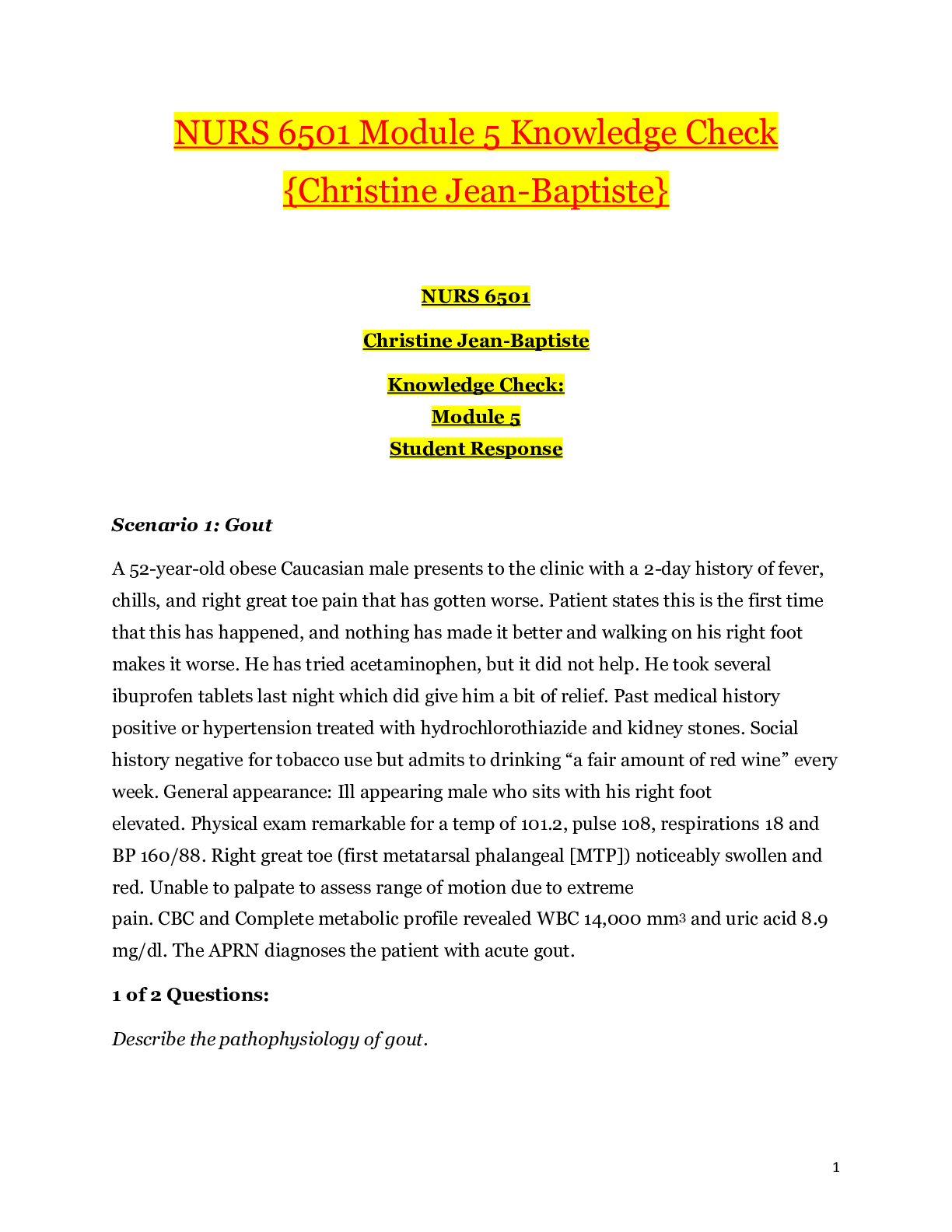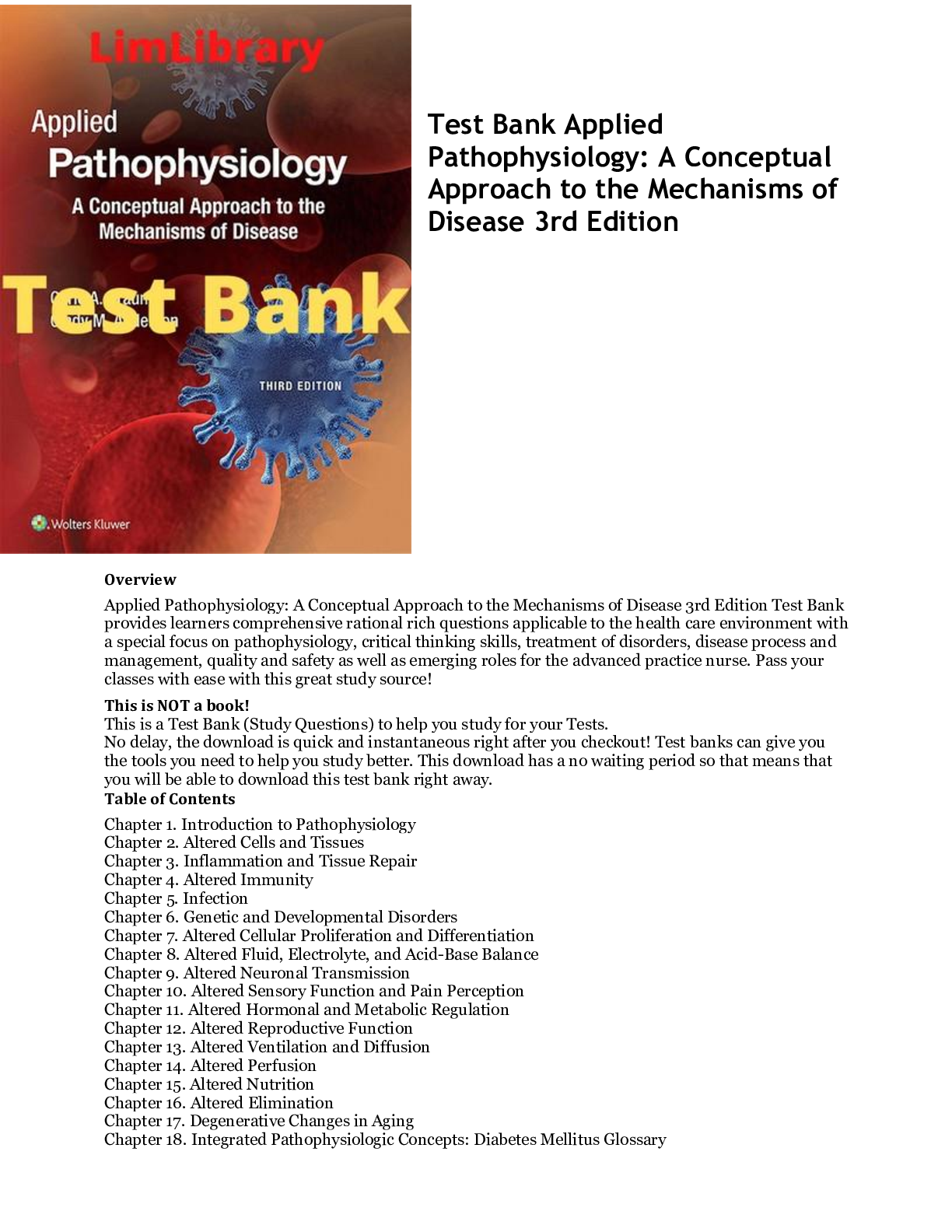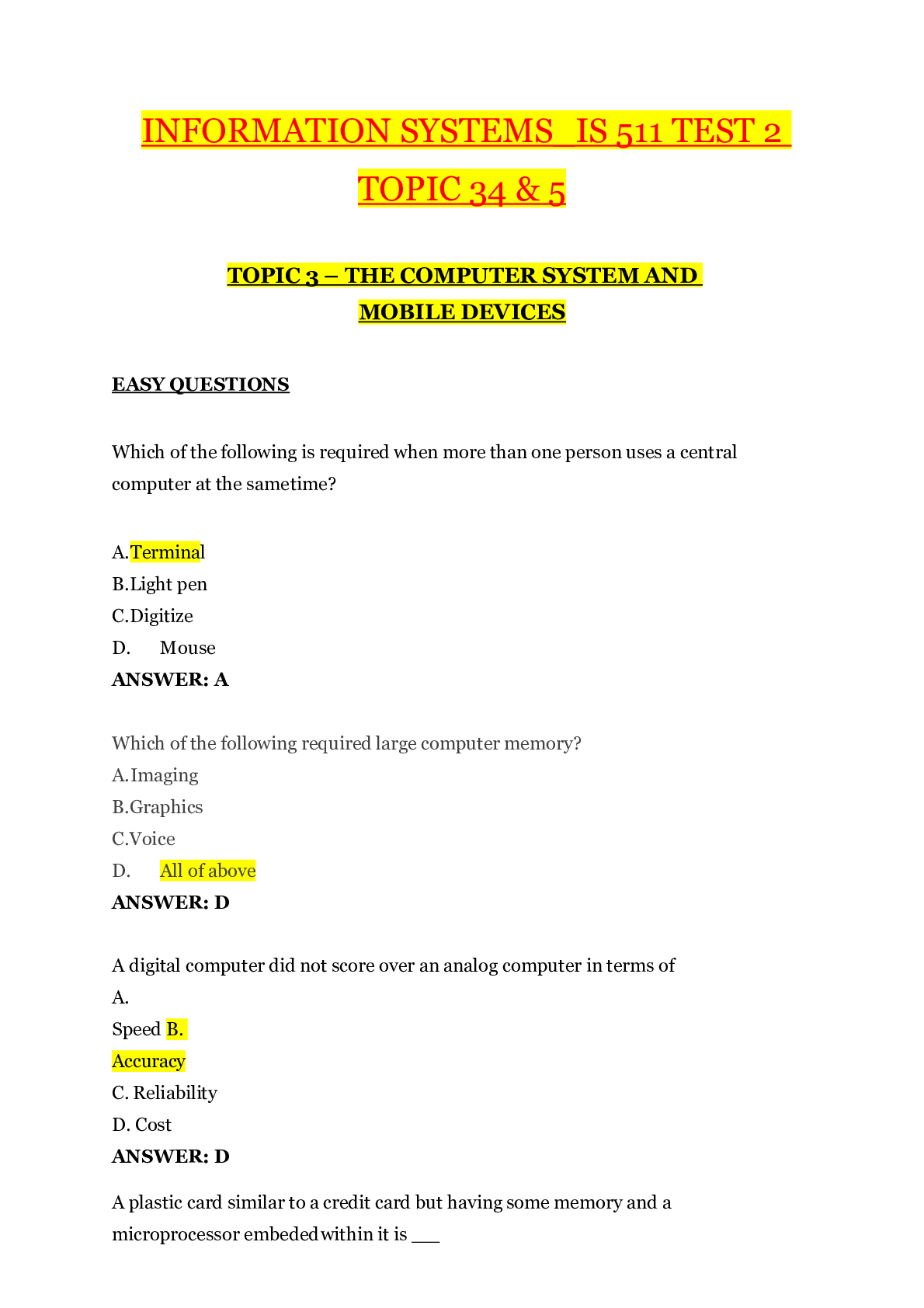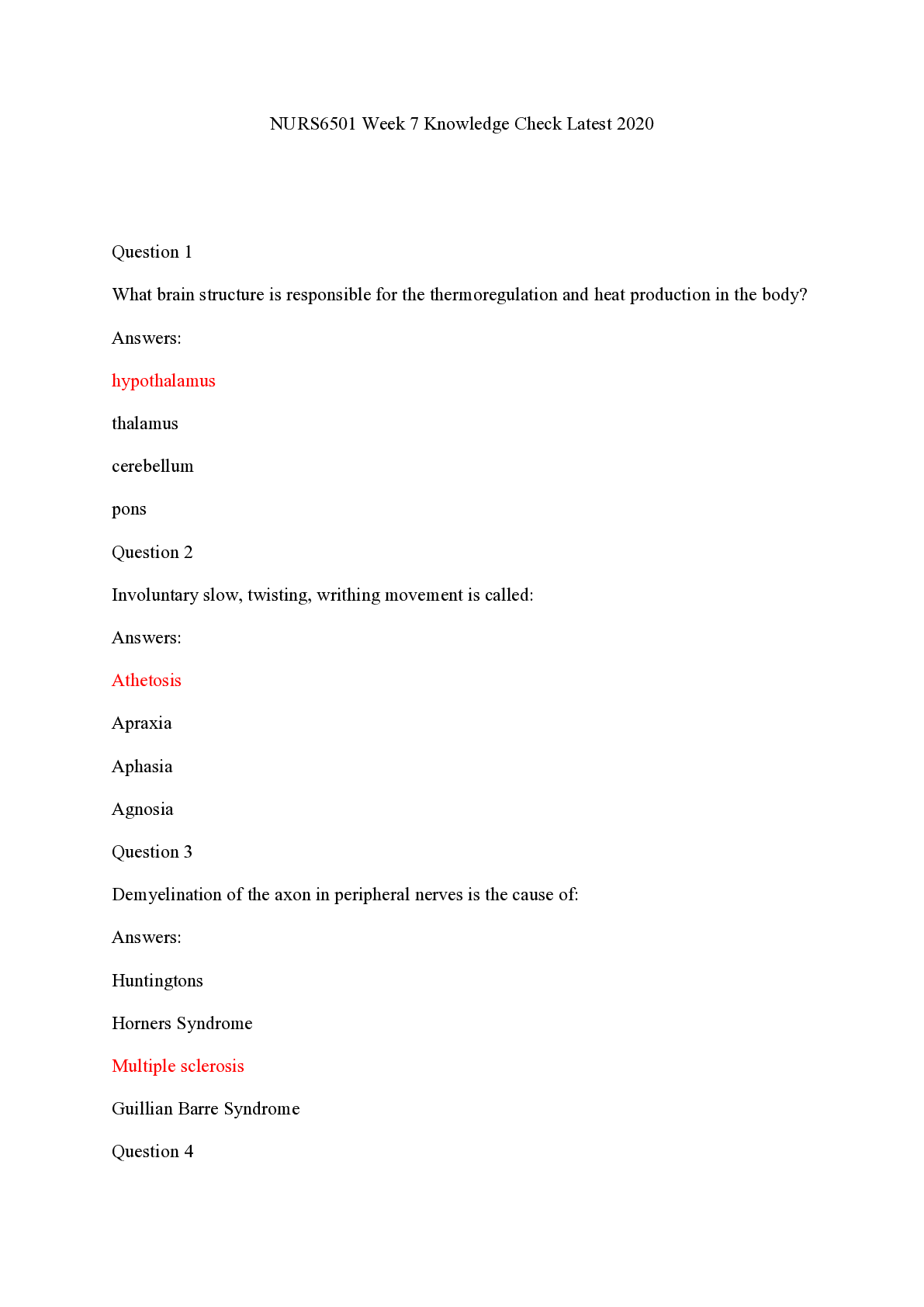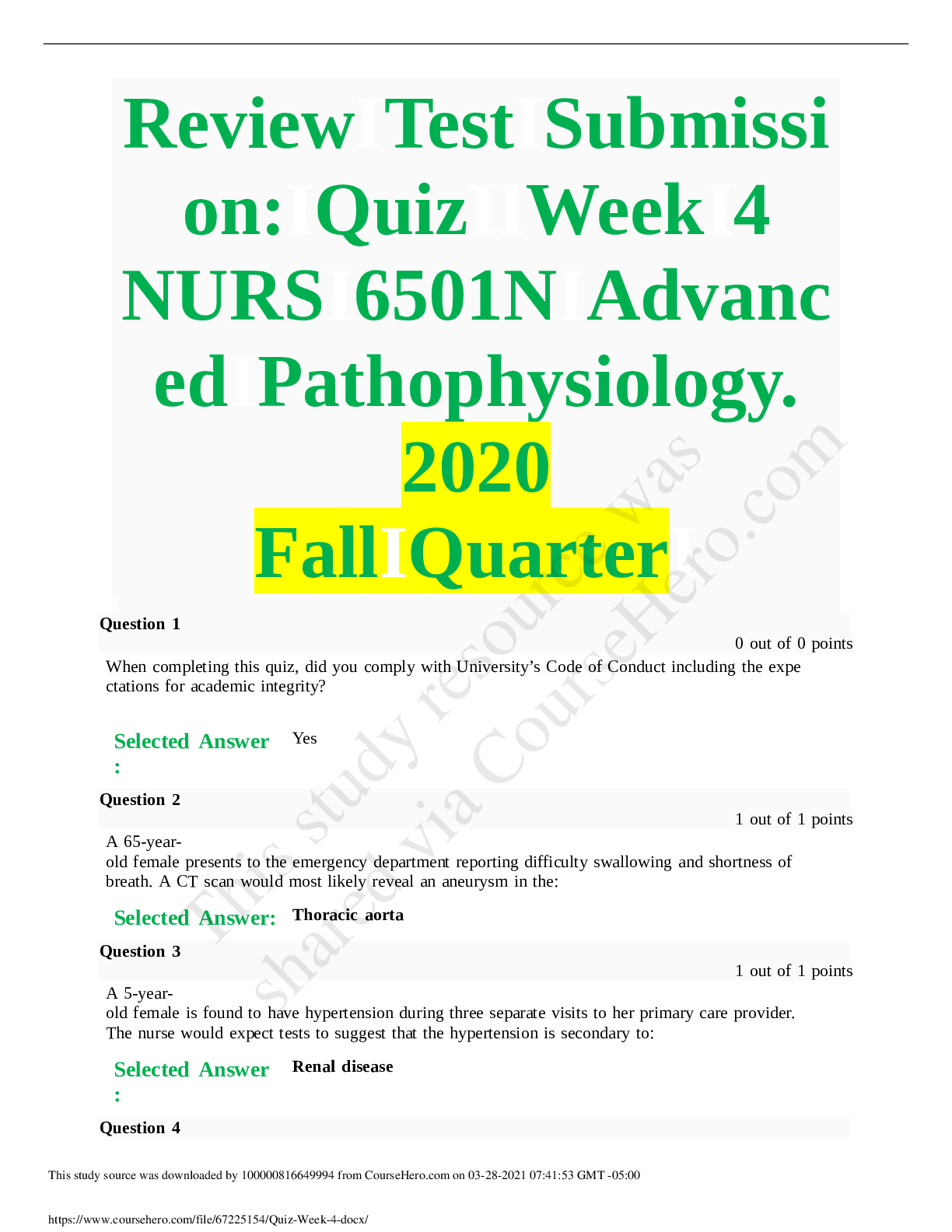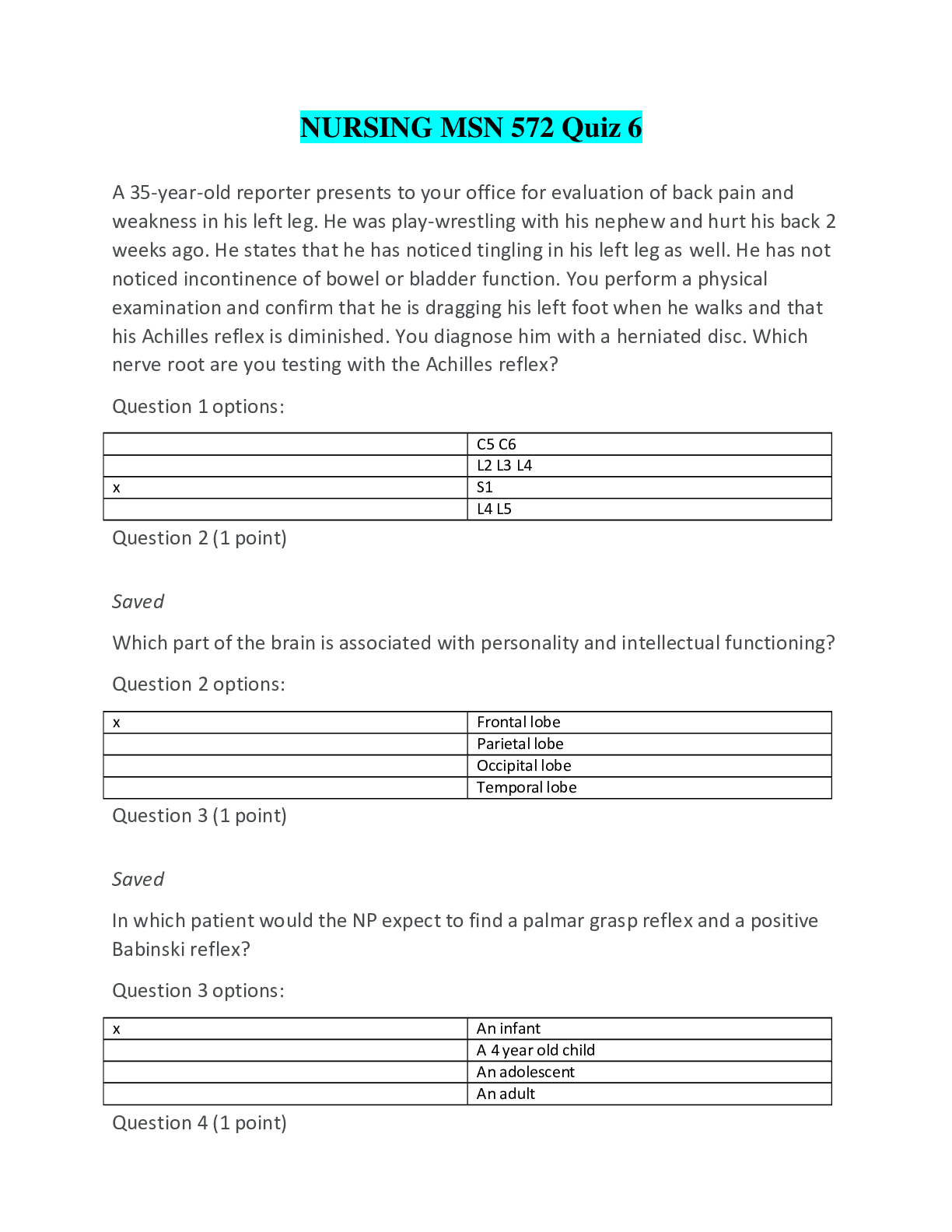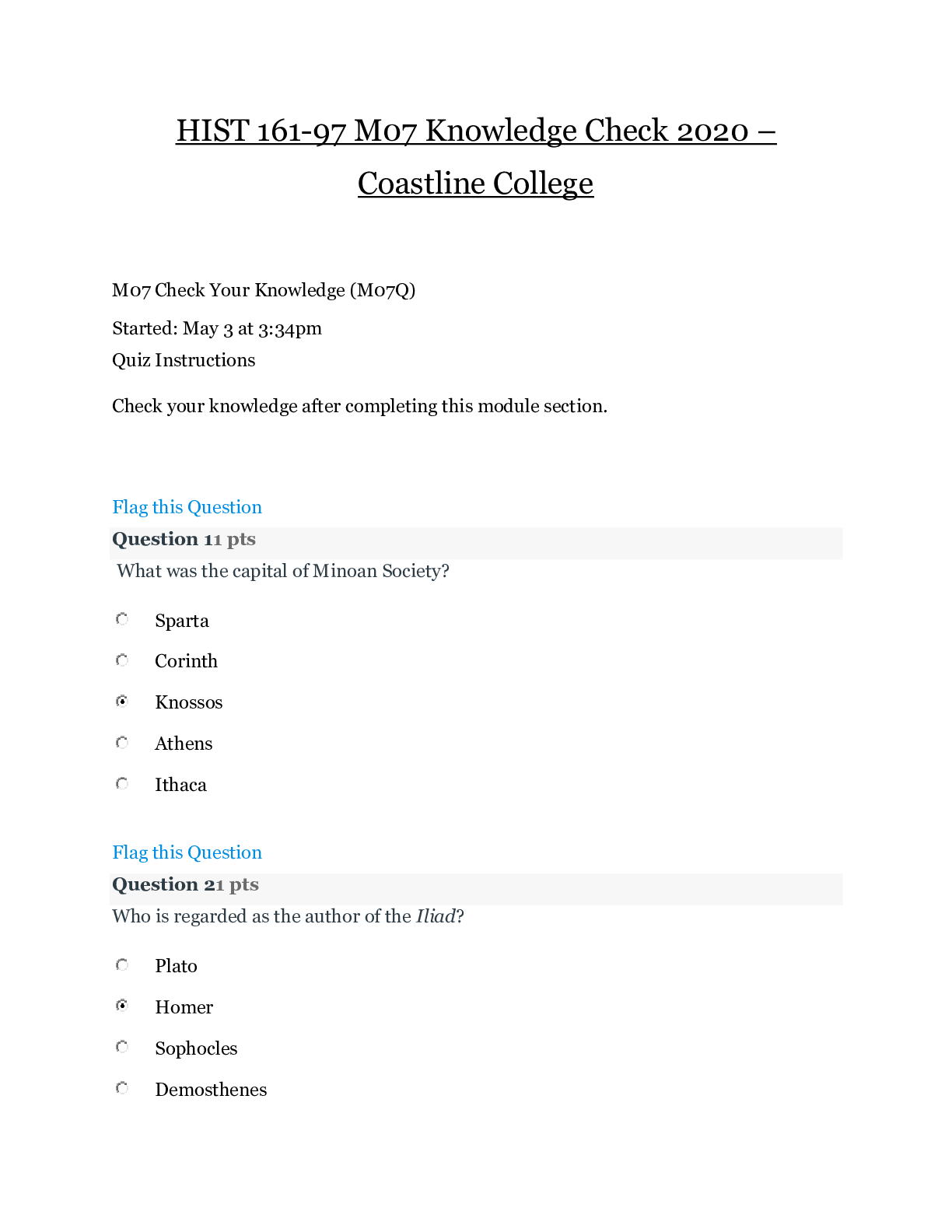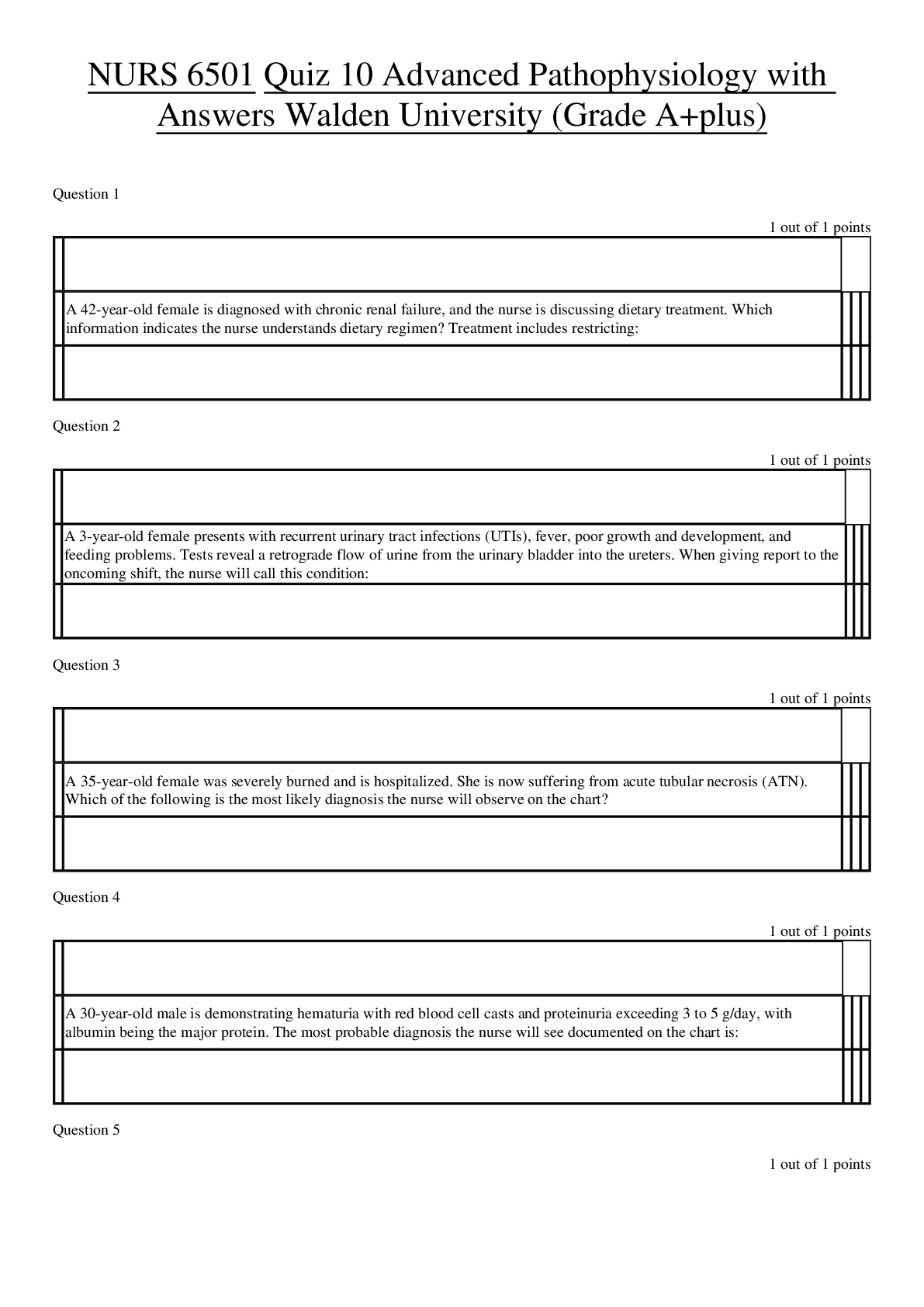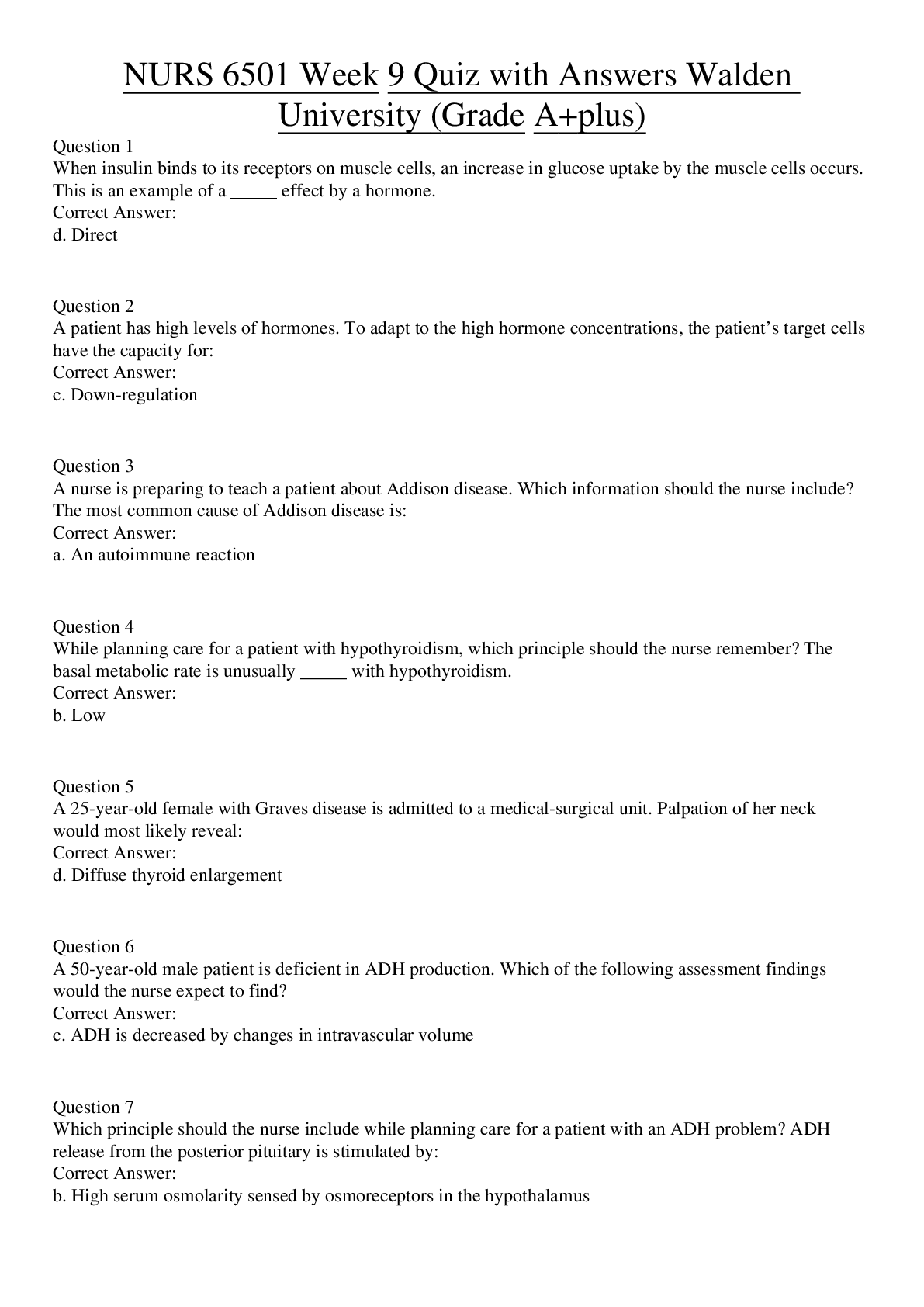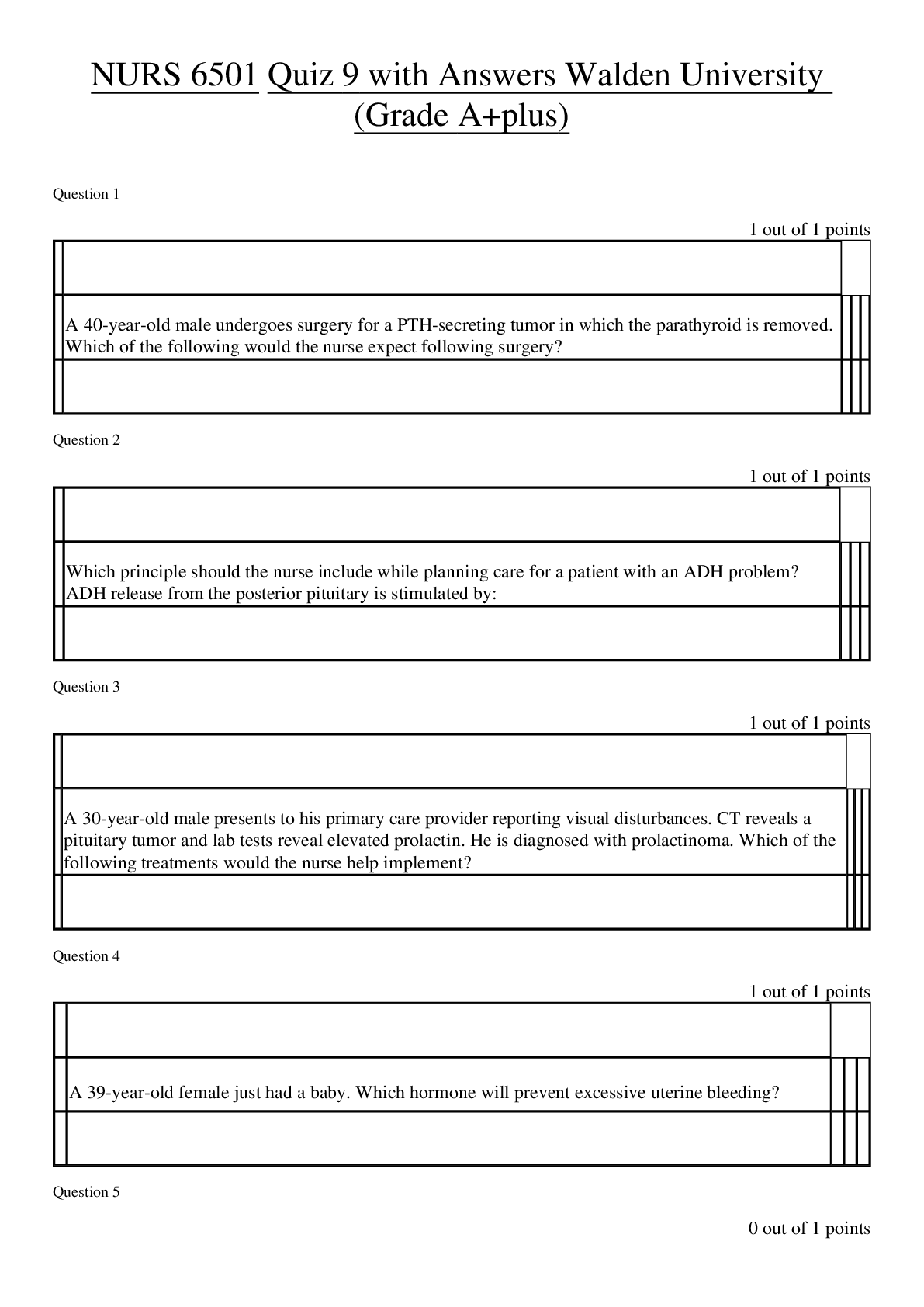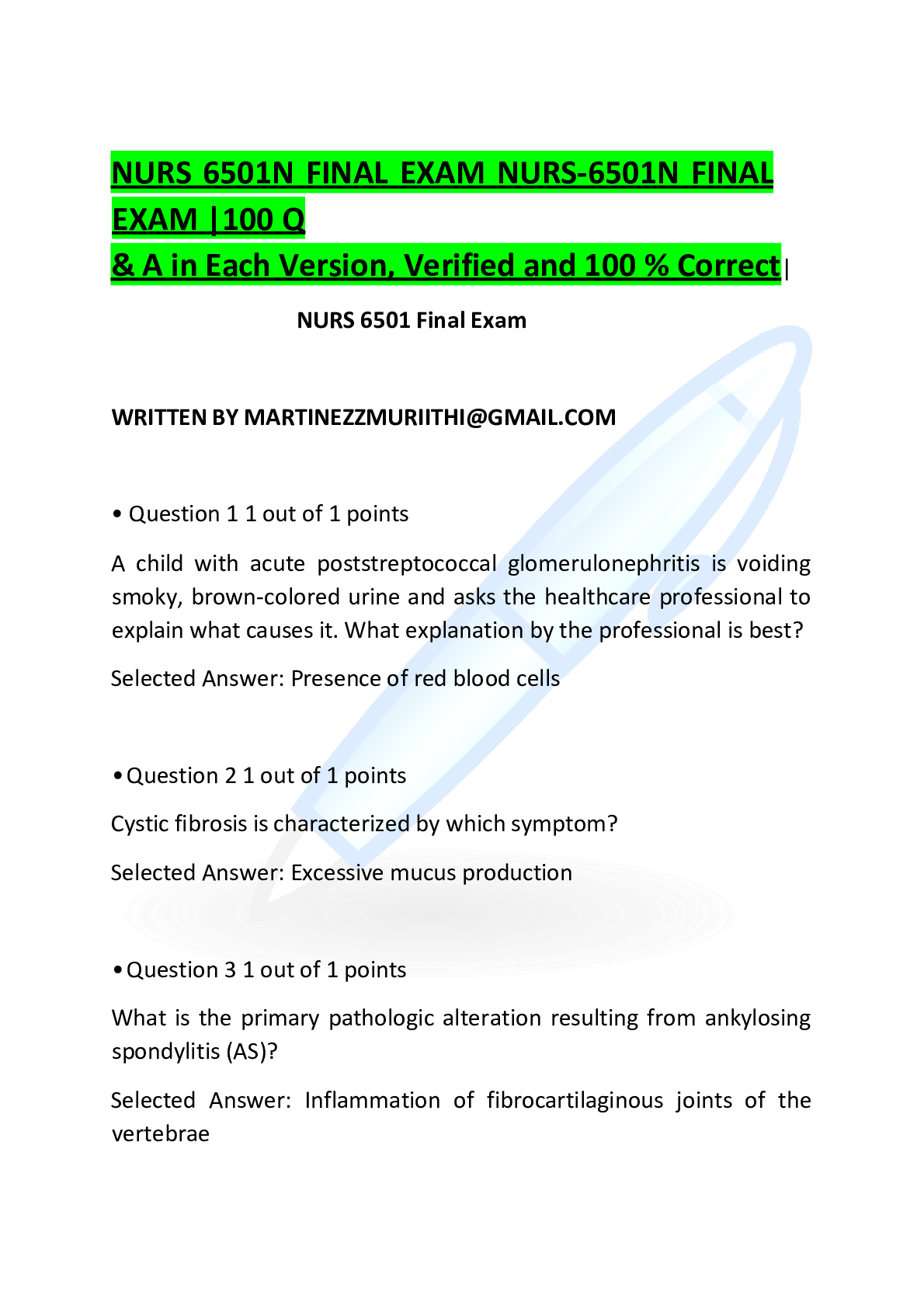*NURSING > EXAM > Christine Jean-Baptiste_Module 7 Knowledge Check_2020 | NURS 6501 Knowledge Check _Student Response (All)
Christine Jean-Baptiste_Module 7 Knowledge Check_2020 | NURS 6501 Knowledge Check _Student Response
Document Content and Description Below
NURS 6501 Module 7 Knowledge Check {Christine Jean-Baptiste} NURS 6501 Knowledge Check: Module 7 Student Response Scenario 1: Polycystic Ovarian Syndrome (PCOS) A 28-year-old woman presen... ts to the clinic with a chief complaint of hirsutism and irregular menses. She describes irregular and infrequent menses (five or six per year) since menarche at 12 years of age. She began to develop dark, coarse facial hair when she was 14 years of age, but her parents did not seek treatment or medical opinion at that time. The symptoms worsened after she gained weight in college. She got married 3 years ago and has been trying to get pregnant for the last 2 years without success. Height 66 inches and weight 198. BMI 32 kg.m2. Moderate hirsutism without virilization noted. Laboratory data reveal CMP within normal limits (WNL), CBC with manual differential (WNL), TSH 0.9 IU/L SI units (normal 0.4-4.0 IU/L SI units), a total testosterone of 65 ng/dl (normal 2.4-47 ng/dl), and glycated hemoglobin level of 6.1% (normal value ≤5.6%). Based on this information, the APRN diagnoses the patient with polycystic ovarian syndrome (PCOS) and refers her to the Women’s Health APRN for further workup and management. Question 1 of 2: What is the pathogenesis of PCOS? The underlying cause of PCOS is unknown, however a genetic basis is suspected. The pathogenesis of PCOS has been linked to altered luteinizing hormone (LH) action, insulin resistance, and a possible predisposition to hyperandrogenism. One theory maintains that underlying insulin resistance exacerbates hyperandrogenism by suppressing synthesis of sex hormone–binding globulin and increasing adrenal and ovarian synthesis of androgens, thereby increasing androgen levels. These androgens then lead to irregular menses and physical manifestations of hyperandrogenism. The hyperandrogenic state is a cardinal feature of PCOS but glucose intolerance/insulin resistance and hyperinsulinemia often run parallel to and markedly aggravate the hyperandrogenic state, thus contributing to the severity of signs and symptoms of PCOS. Question 2 of 2: How does PCOS affect a woman’s fertility or infertility? Ovulation difficulties are usually the primary cause of infertility in women with PCOS. Ovulation may not occur due to an increase in testosterone production or because follicles on the ovaries do not mature. Due to unbalanced hormones, ovulation and menstruation can be irregular. A hyperandrogenic state is a cardinal feature in the pathogenesis of PCOS. Excessive androgens affect follicular growth, and insulin affects follicular decline by suppressing apoptosis and enabling follicle to persist. There is dysfunction in ovarian follicle development. Inappropriate gonadotropin secretion triggers the beginning of a vicious cycle that perpetuates anovulation. Scenario 2: Pelvic Inflammatory Disease (PID) A 20-year-old female college student presents to the Student Health Clinic with a chief complaint of abdominal pain, foul smelling vaginal discharge, and fever and chills for the past 4 days. She denies nausea, vomiting, or difficulties with defecation. Last bowel movement this morning and was normal for her. Nothing has helped with the pain despite taking ibuprofen 200 mg orally several times a day. She describes the pain as sharp and localizes the pain to her lower abdomen. Past medical history noncontributory. GYN/Social history + for having had unprotected sex while at a fraternity party. Physical exam: thin, Ill appearing anxious looking white female who is moving around on the exam table and unable to find a comfortable position. Temperature 101.6F orally, pulse 120, respirations 22 and regular. Review of systems negative except for chief complaint. Focused assessment of abdomen demonstrated moderate pain to palpation left and right lower quadrants. Upper quadrants soft and non-tender. Bowel sounds diminished in bilateral lower quadrants. Pelvic exam demonstrated + adnexal tenderness, + cervical motion tenderness and copious amounts of greenish thick secretions. The APRN diagnoses the patient as having pelvic inflammatory disease (PID). Question: What is the pathophysiology of PID? Pelvic inflammatory disease (PID) is an infectious and inflammatory disorder of the upper female genital tract, including the uterus, fallopian tubes, or ovaries; in more severe form, the entire peritoneal cavity. The development of upper genital tract infections is mediated by the failure of a number of defense mechanisms that usually are effective in preventing PID. Chlamydia and gonorrhea are the predominant sexually transmitted organism associated with PID. Many anaerobic bacteria have been implicated in increasing the risk of PID because they alter the pH of the vaginal environment and may decrease the integrity of the mucus blocking the cervical canal. Once the infection is established within the uterus and fallopian/uterine tubes, the infection may induce changes in the columnar epithelium lining the upper reproductive tract, causing permanent damage. The resultant inflammatory response causes localized edema and occasionally obstruction or necrosis of the area. - - - - [Show More]
Last updated: 1 year ago
Preview 1 out of 17 pages
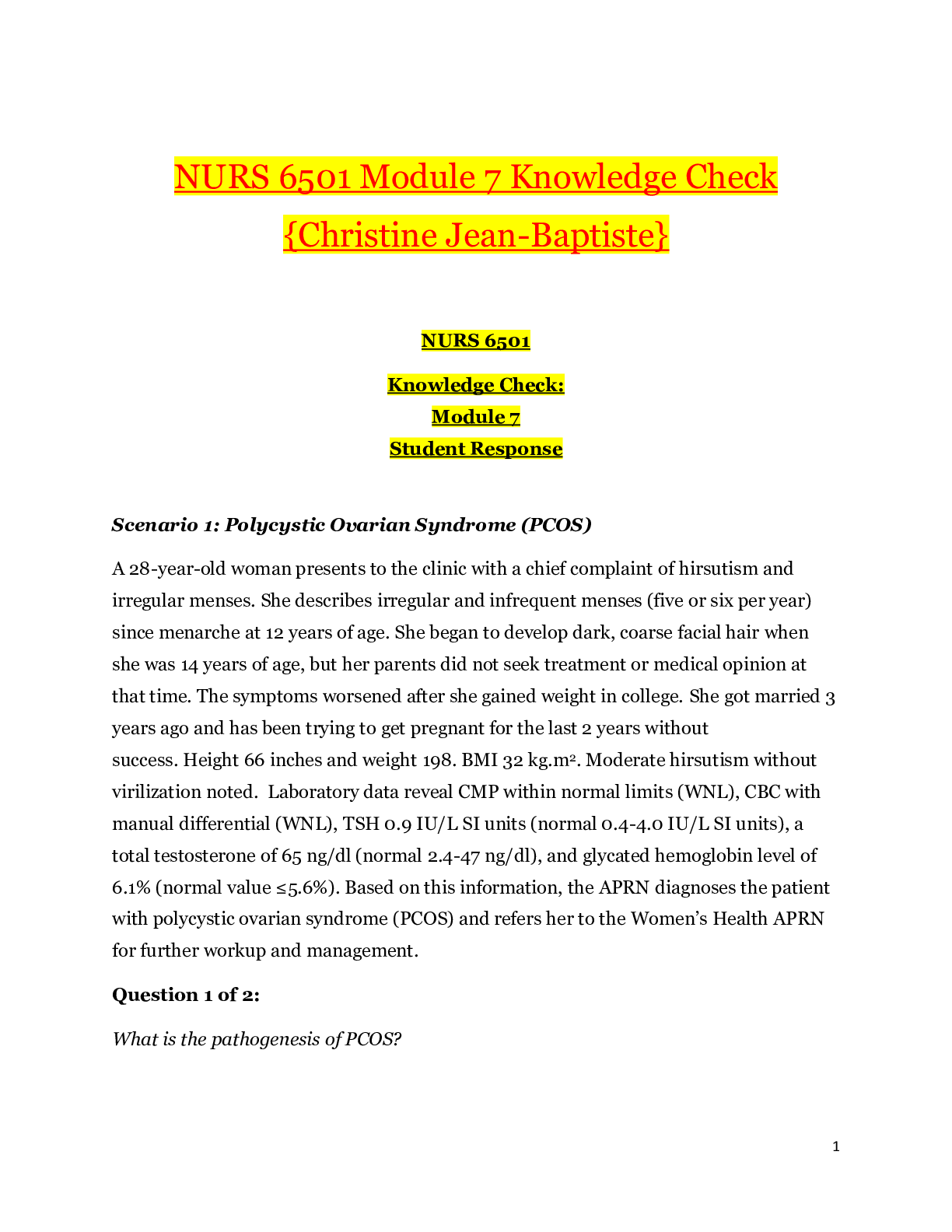
Reviews( 0 )
Document information
Connected school, study & course
About the document
Uploaded On
Jun 23, 2021
Number of pages
17
Written in
Additional information
This document has been written for:
Uploaded
Jun 23, 2021
Downloads
0
Views
39

.png)
